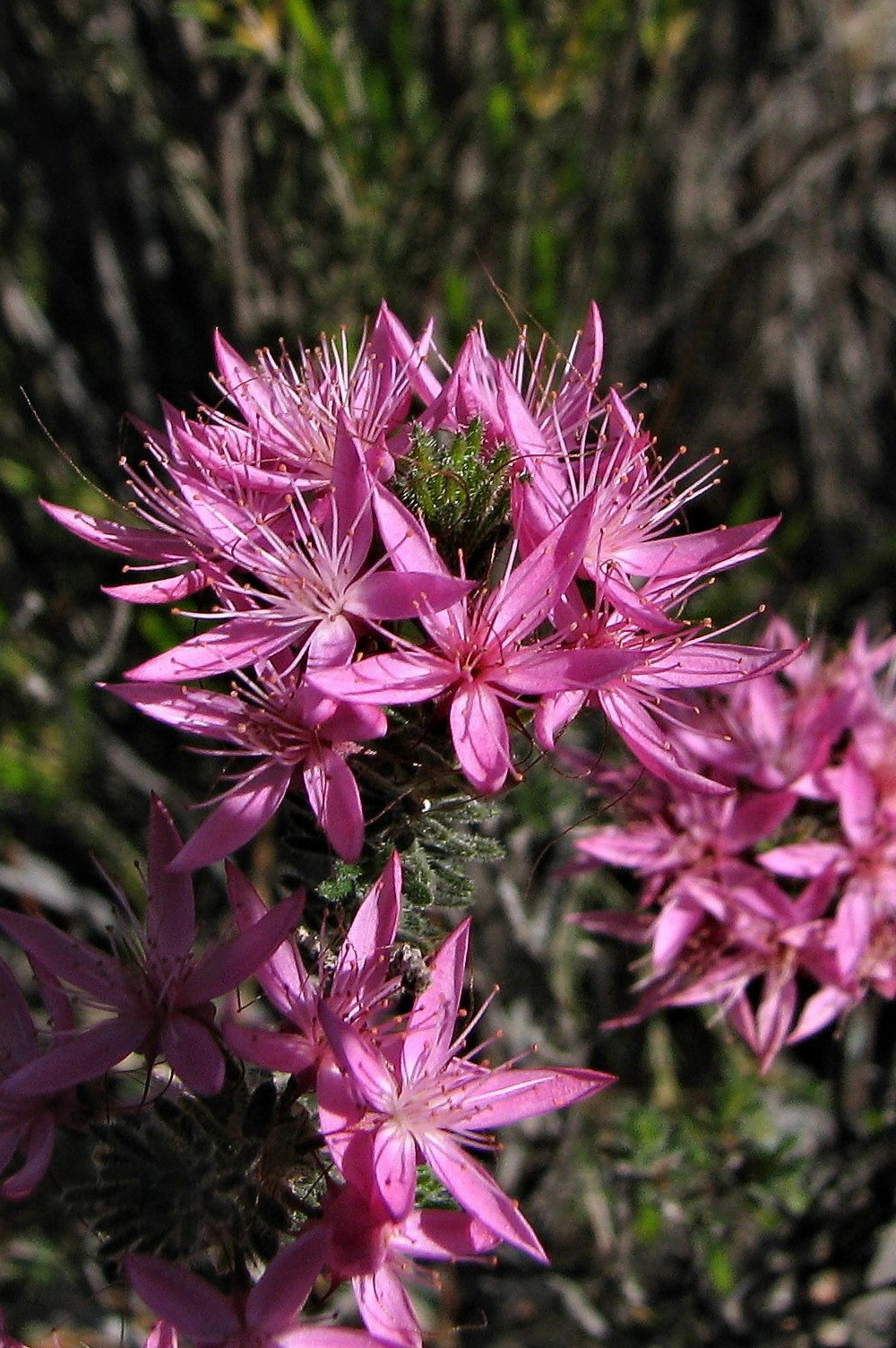Calytrix tetragona
Labill. Common Fringe-myrtleShrub 0.5–3 m high, erect or spreading; branchlets pubescent to glabrous. Leaves linear to narrowly ovate, thick, crowded, mostly inclined to stem, mainly 1–7 mm long, rarely to 15 mm long, c. 0.5 mm wide, usually with many scattered, stiff hairs, apex blunt or minutely mucronate. Flowers white or pink, usually profuse, borne in dense clusters in upper leaf axils; bracteoles usually connate and persistent; hypanthium 7–15 mm long, adnate to style for part of its length; calyx-lobes ovate to suborbicular 1–2.5 mm long, apex produced into an awn to 17 mm long; petals elliptic to lanceolate, 3.5–7.5 mm long; stamens 23–45. Flowers mainly Sep.–Feb.
LoM, MuM, Wim, GleP, Brid, VVP, VRiv, RobP, MuF, GipP, OtP, Gold, CVU, GGr, DunT, NIS, EGL, EGU, WPro, HSF, HNF, OtR, Strz, MonT, VAlp. Also WA, SA, Qld, NSW, ACT, Tas. Widespread, but scattered across most of Victoria particularly in sandy and gravelly soils and on rock outcrops.
A puzzlingly variable species with respect to habit, hairiness and aroma of leaves, flowering period, flower colour, length of awns on sepals etc. Distinctly different forms may occur within the same area (e.g. northern Grampians), and locally the differences may be constant, but when patterns of variation between characters are considered for a wide range of forms, the significance of individual characters appears less convincing. A detailed investigation of the variation within C. tetragona is warranted.
Jeanes, J.A. (1996). Myrtaceae. In: Walsh, N.G.; Entwisle, T.J., Flora of Victoria Vol. 3, Dicotyledons Winteraceae to Myrtaceae, pp. 942–1044. Inkata Press, Melbourne.
 Spinning
Spinning


